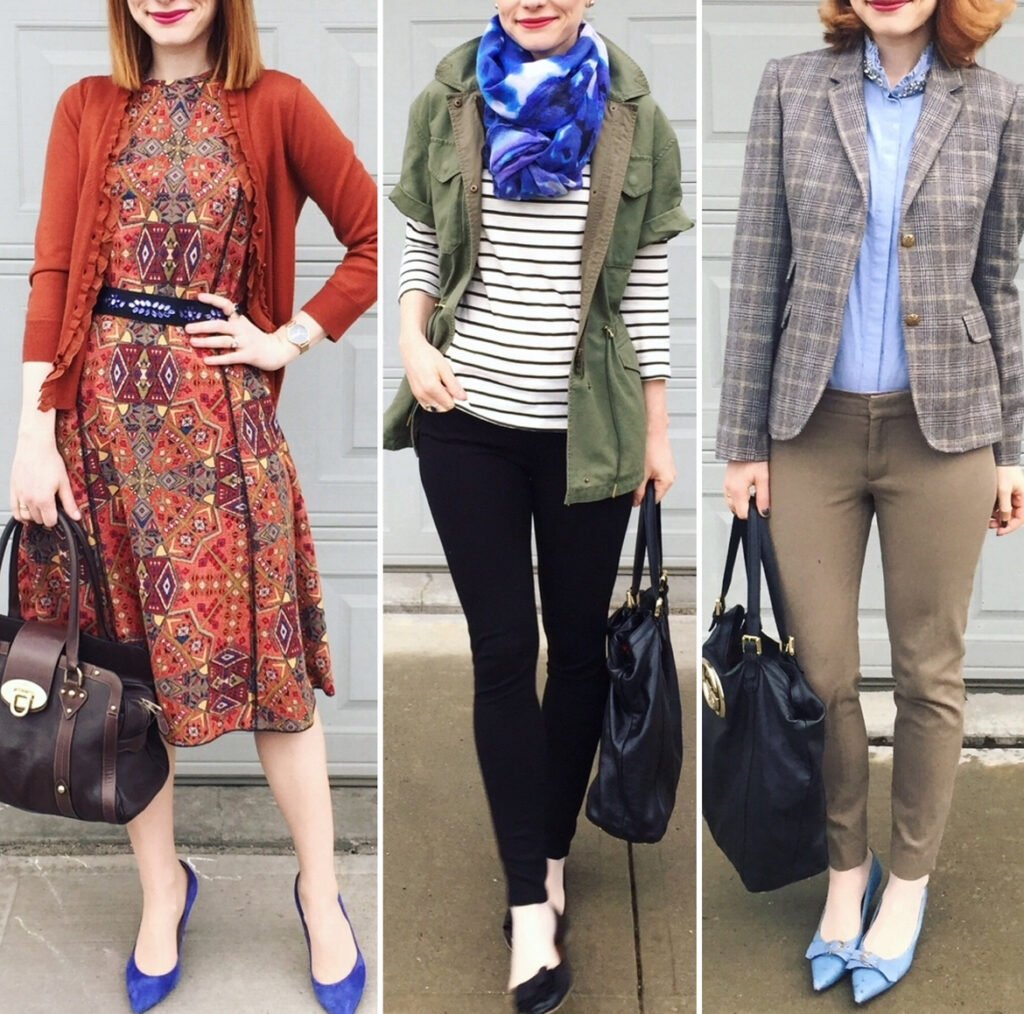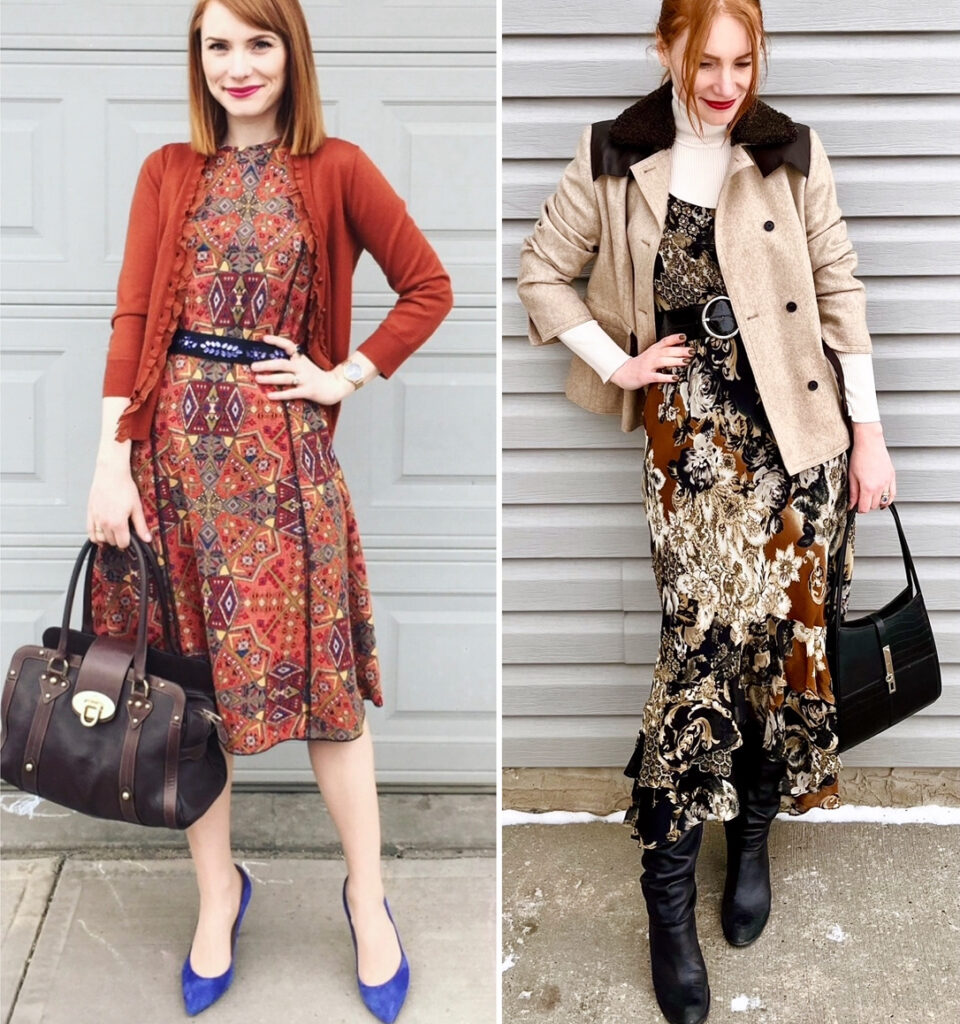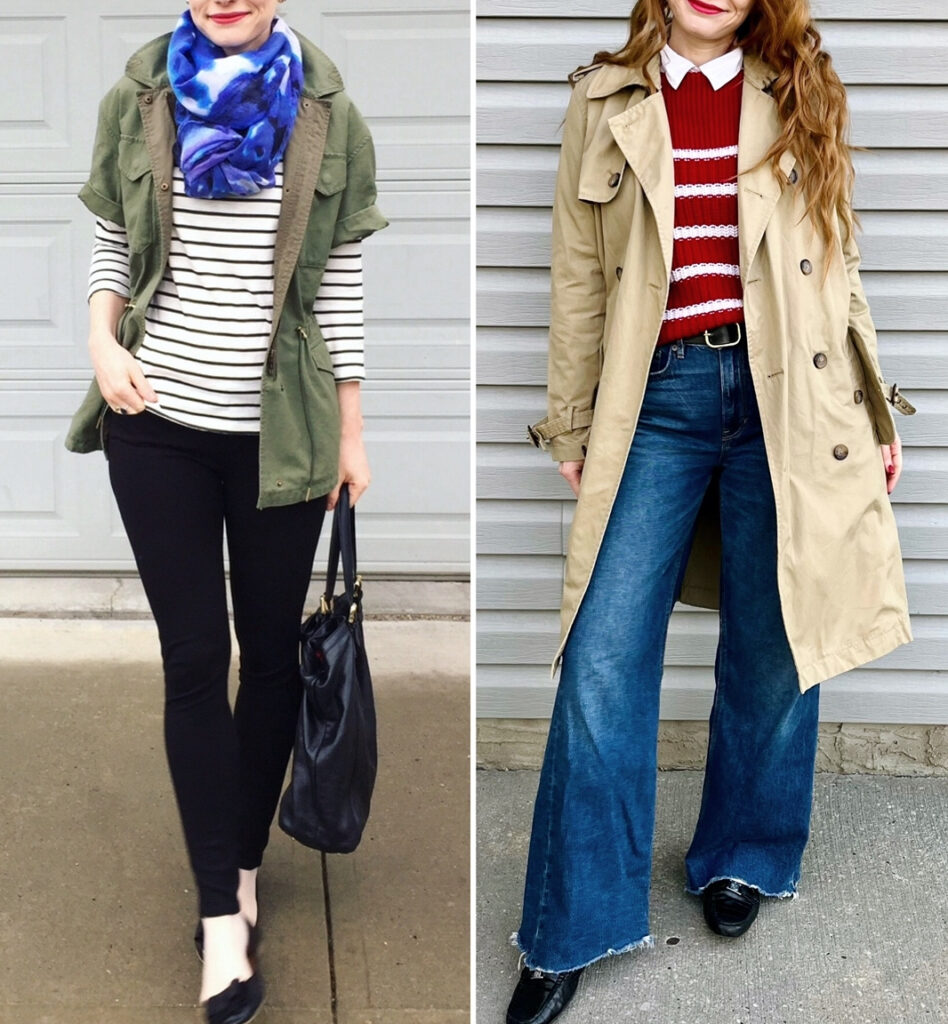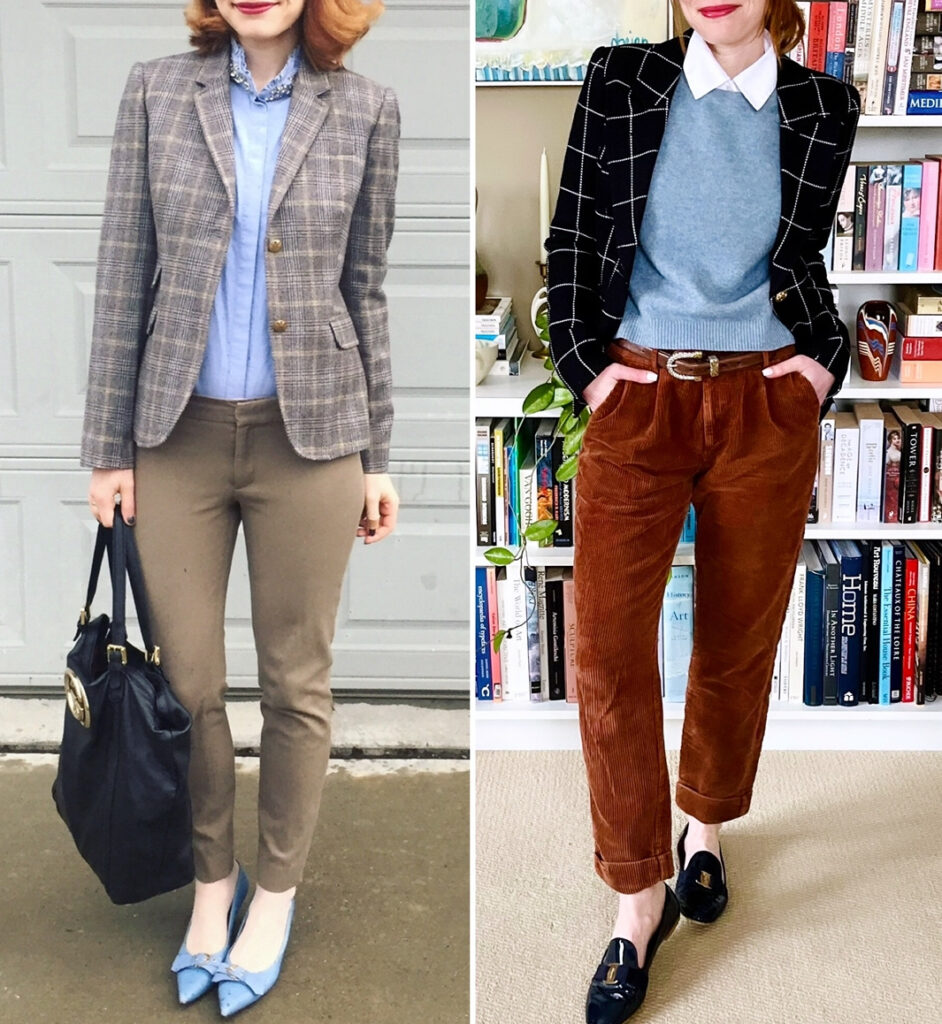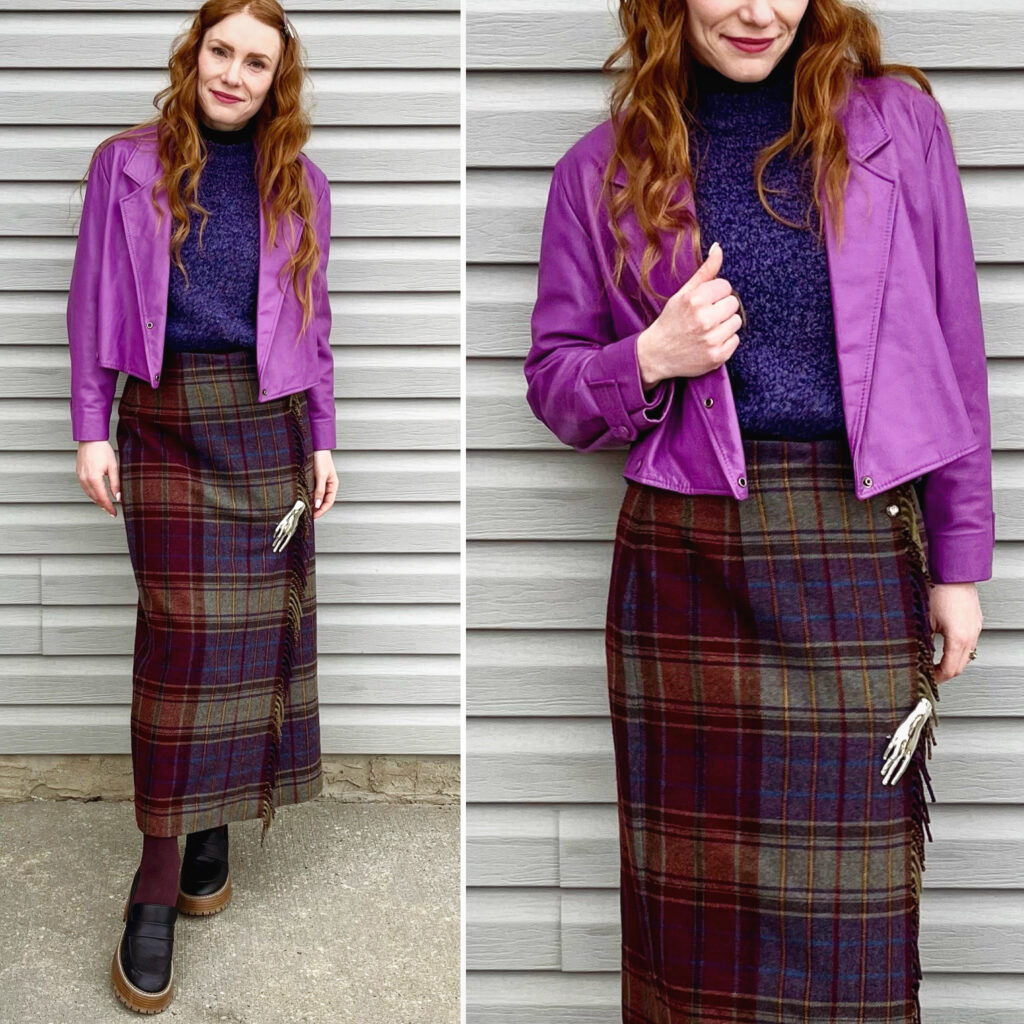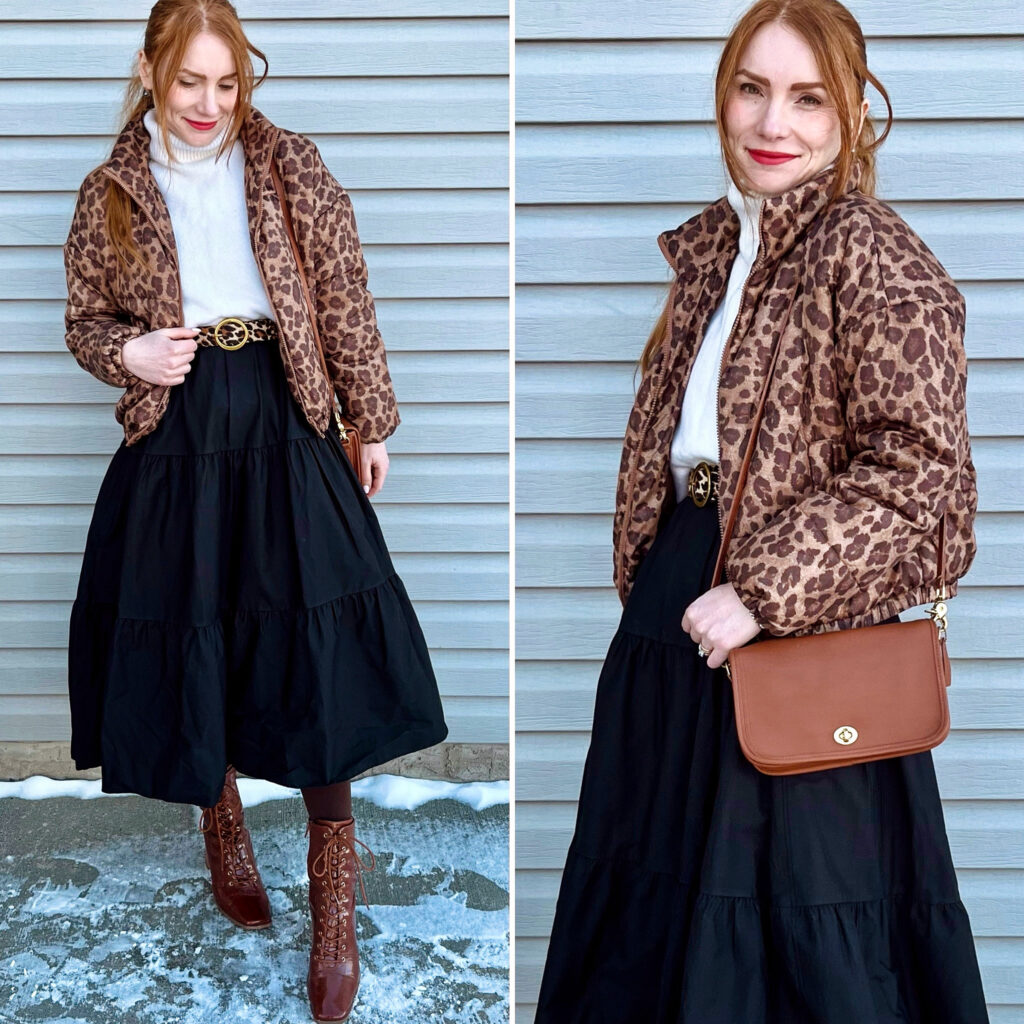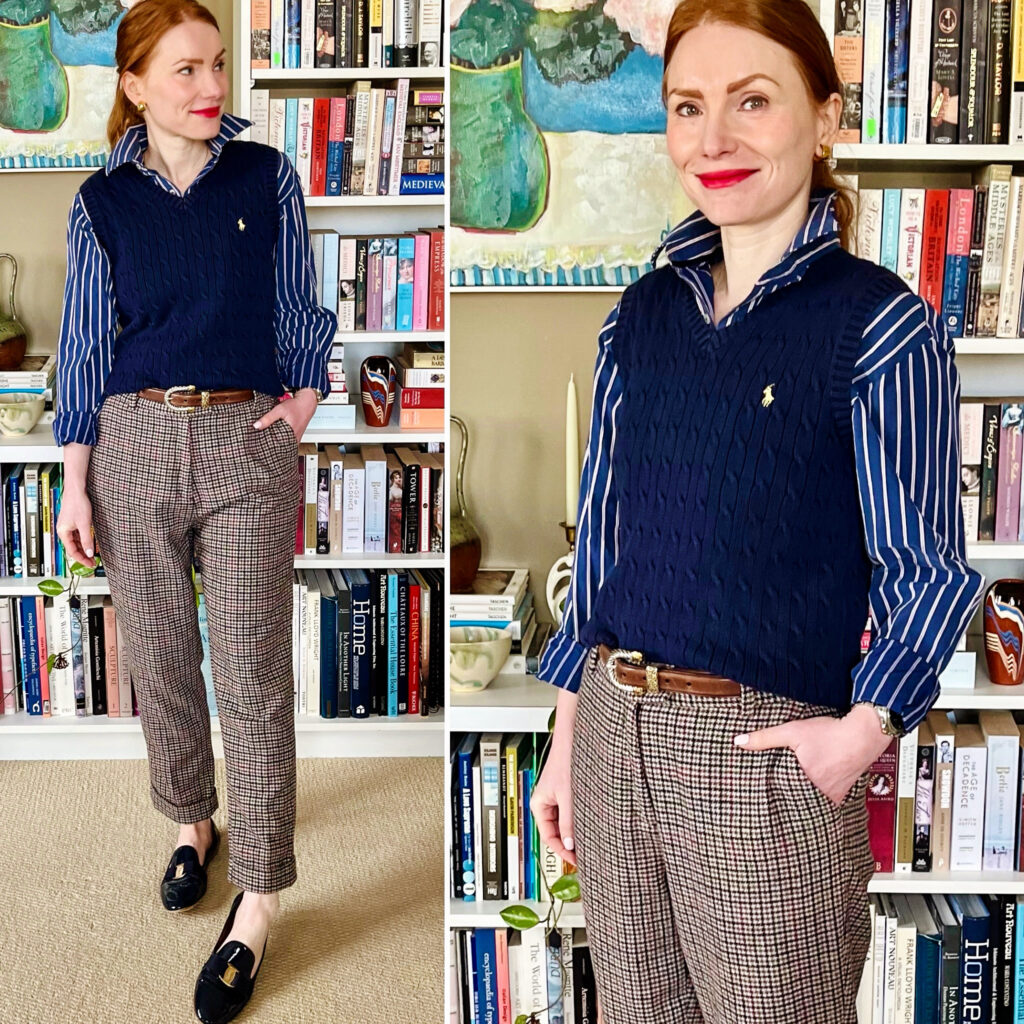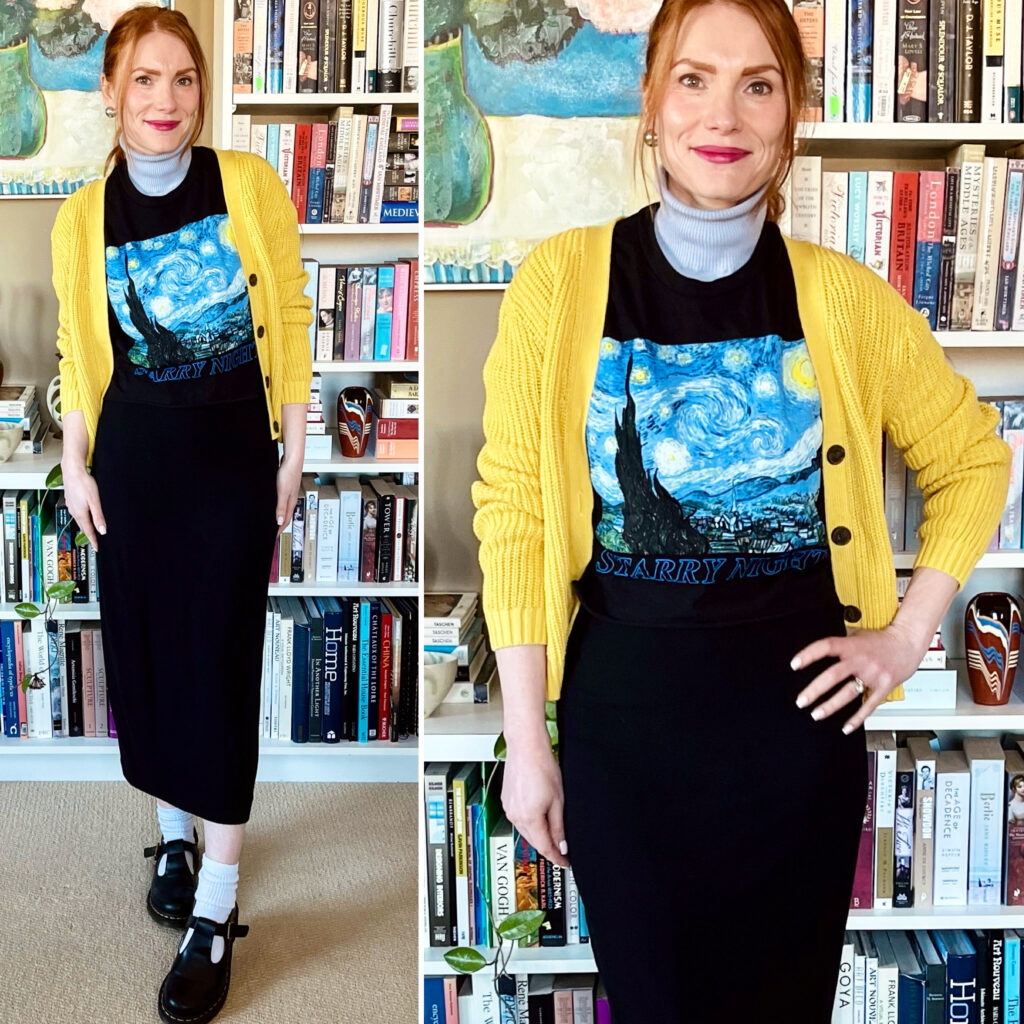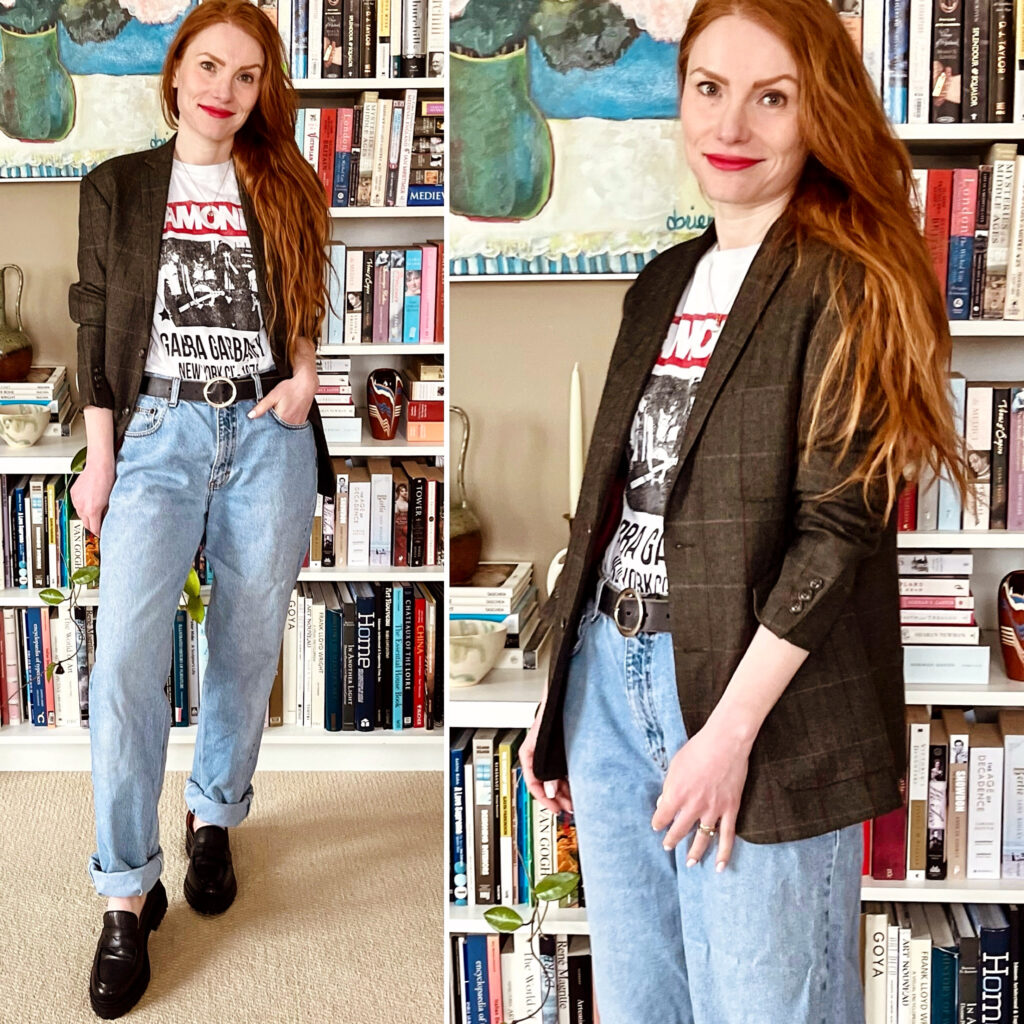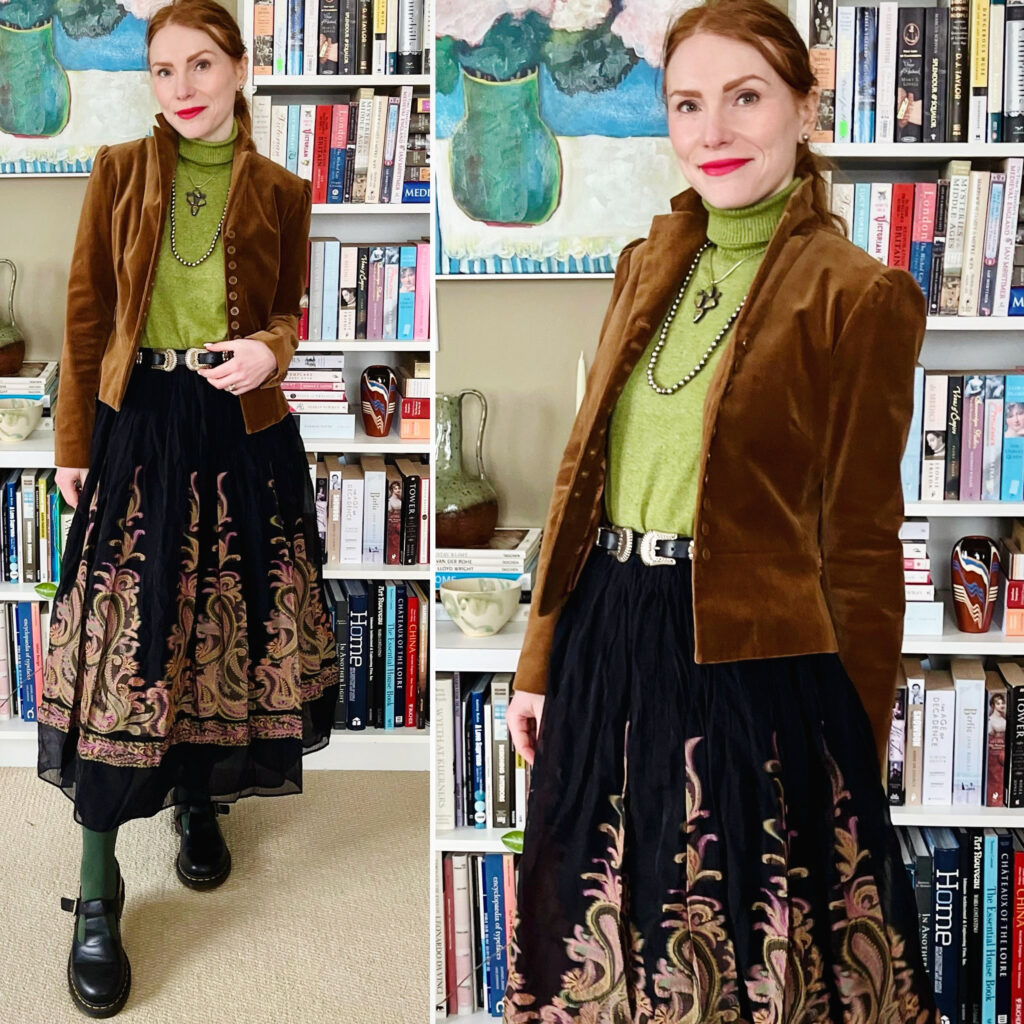
Details: Emma James turtleneck, Gap jacket, unlabeled skirt, Dr. Martens shoes (all secondhand)
Thoughts: I fell in love with this shade of green as soon as I spotted this sleeveless turtleneck at the thrifts, and I feel vindicated because, look how nice it is! And paired with brown? Chef’s kiss. I knew the colours would work together, because the pattern of the skirt features both of them. I hadn’t worn this skirt in a while, but found it while going through my overflow closet, and decided it needed to come live in my current closet again. Or, as it turned out later, my daughter’s closet. Yes, she immediately snagged it. It seems a love of voluminous, twirly skirts is genetic. Who knew?
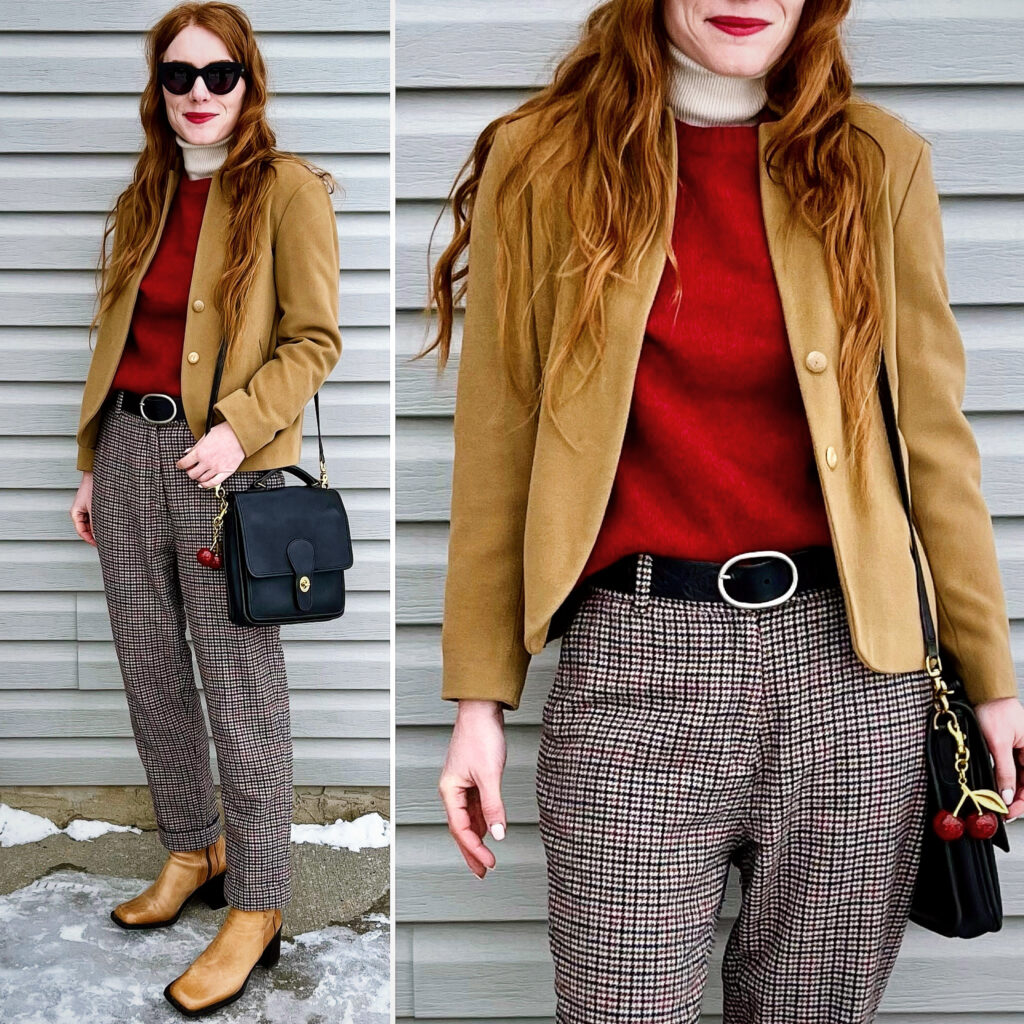
Details: Ricki’s turtleneck, Benetton sweater, Jil Sander jacket, Frank & Oak pants, Aldo shoes, Coach bag (all secondhand)
Thoughts: A little academichic moment, because classics never die. These pants are a little loose, but I dig that. Plus, they’re wool and lined, and I simply can’t pass that up. What do we think about these shoes? The 90s called, but they’re not getting their square-toed boots back, sorrynotsorry. This, by the way, is the colour of cowboy boots I’ve been looking for. Still haven’t found a pair, YET, but these just-above-the-ankle pair might fill the gap for now. I do think it’s a versatile alternative for a brown boot (next to chocolate and other medium and darker browns).
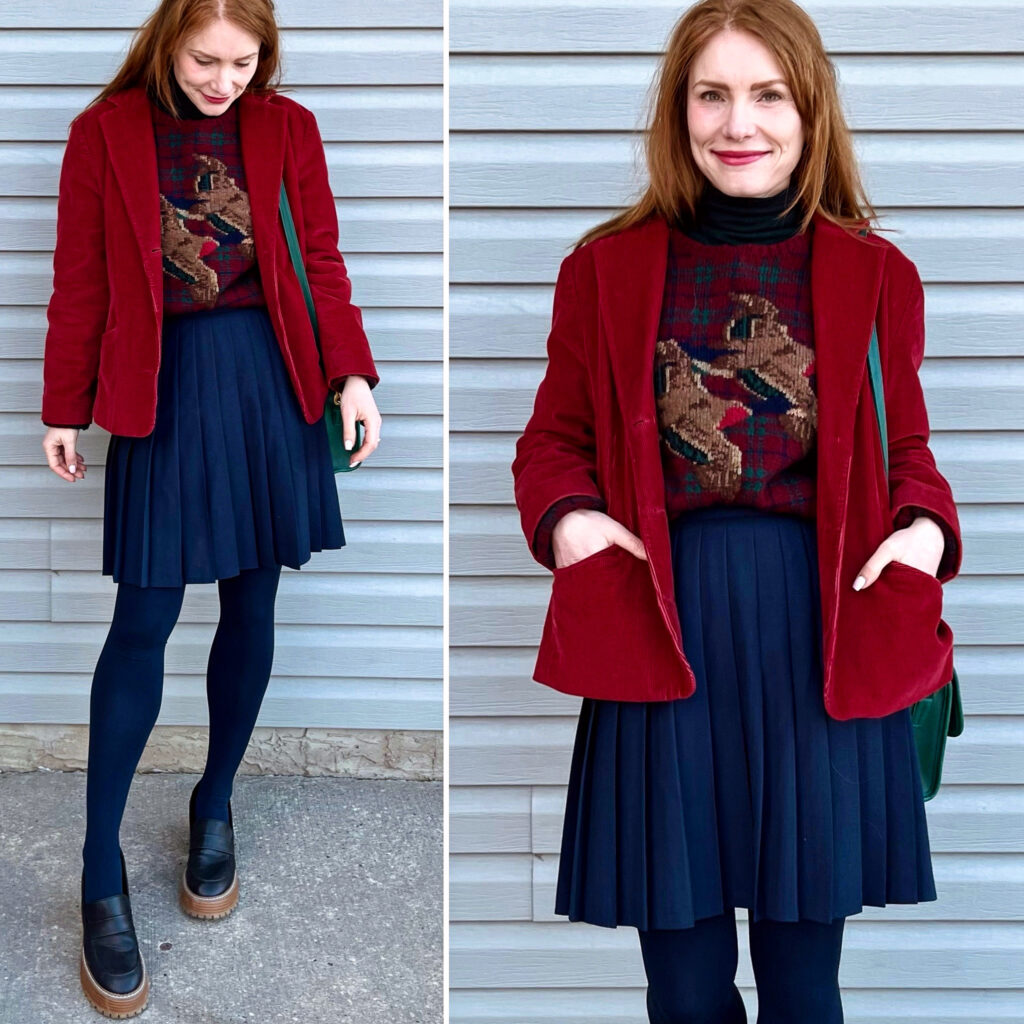
Details: Ralph Lauren sweater, LL Bean jacket, vintage skirt, Coach bag (all secondhand), Mia shoes (retail, old)
Thoughts: I’m about to put all my heavy sweaters back into storage, but had to give this one another whirl before the season is over. Especially since I recently thrifted this vintage(ish?) dark red corduroy LL Bean jacket, which is a perfect pairing, both colour- and texture-wise. Decided to go for the less expected option, and added a short skirt instead of one of my usual standbys. This pleated, navy number has proven the most versatile of all the mini-skirts I’ve added to my closet recently. And it’s a great length on me — not too long, not too short.
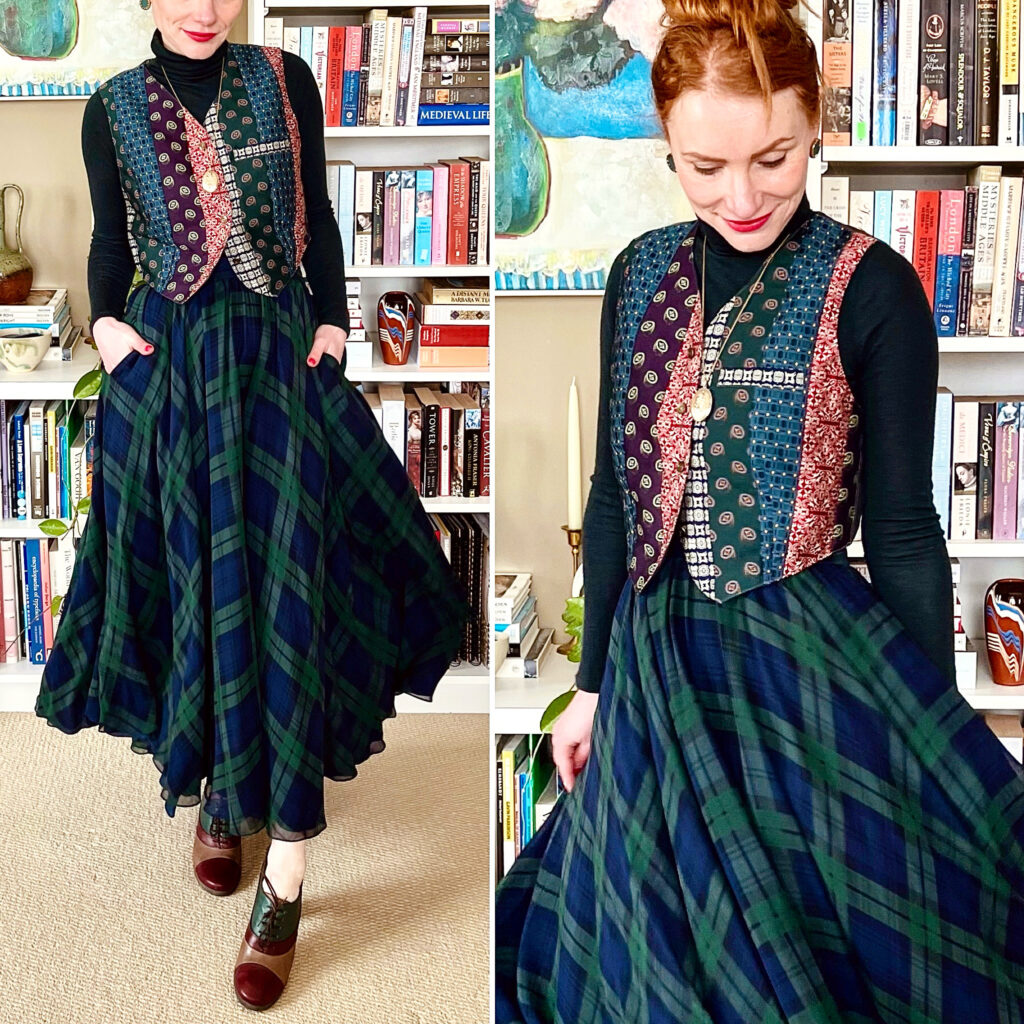
Details: Club Monaco turtleneck (retail, old), Gap vest, Ralph Lauren skirt, Pedro Mirailles shoes (all thrifted)
Thoughts: It was fated that I should wear these two pieces together. I mean, JUST LOOK. And don’t miss the shoes, either, because they’re not merely a third wheel. More like a power throuple over here, amirite? Sorry, I’ll see myself out.
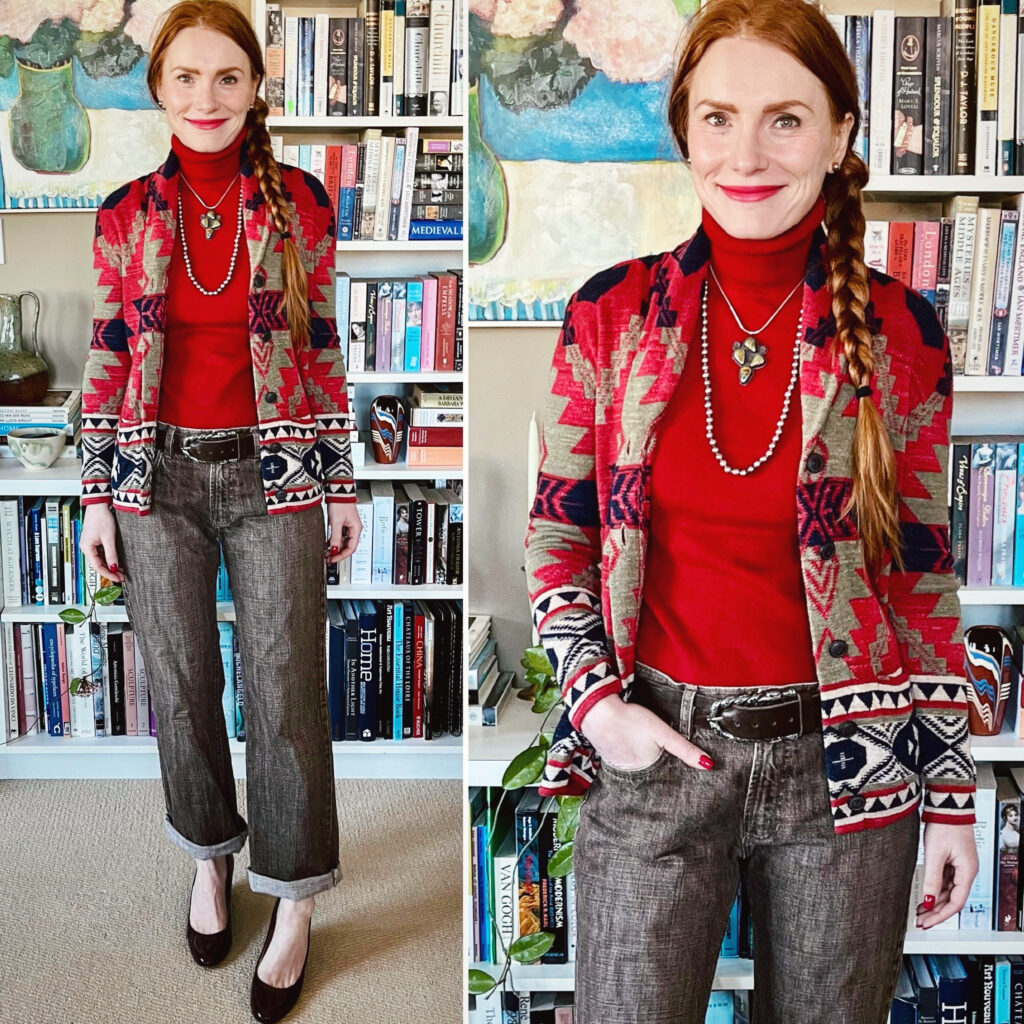
Details: vintage turtleneck, Denim & Supply jacket, Gap jeans, Brave belt (all thrifted)
Thoughts: But first! A little Papa Ralph-inspired action and, to be very very clear, I am making ZERO innuendoes here. I thrifted this jacket despite being somewhat on the fence about it, but this outfit is a persuasive argument that it should stay in my closet. It’s also an argument in favour of pairing these shades of red and brown again, because wow, sleeper hit. I love it when my closet throws fun surprises at me.
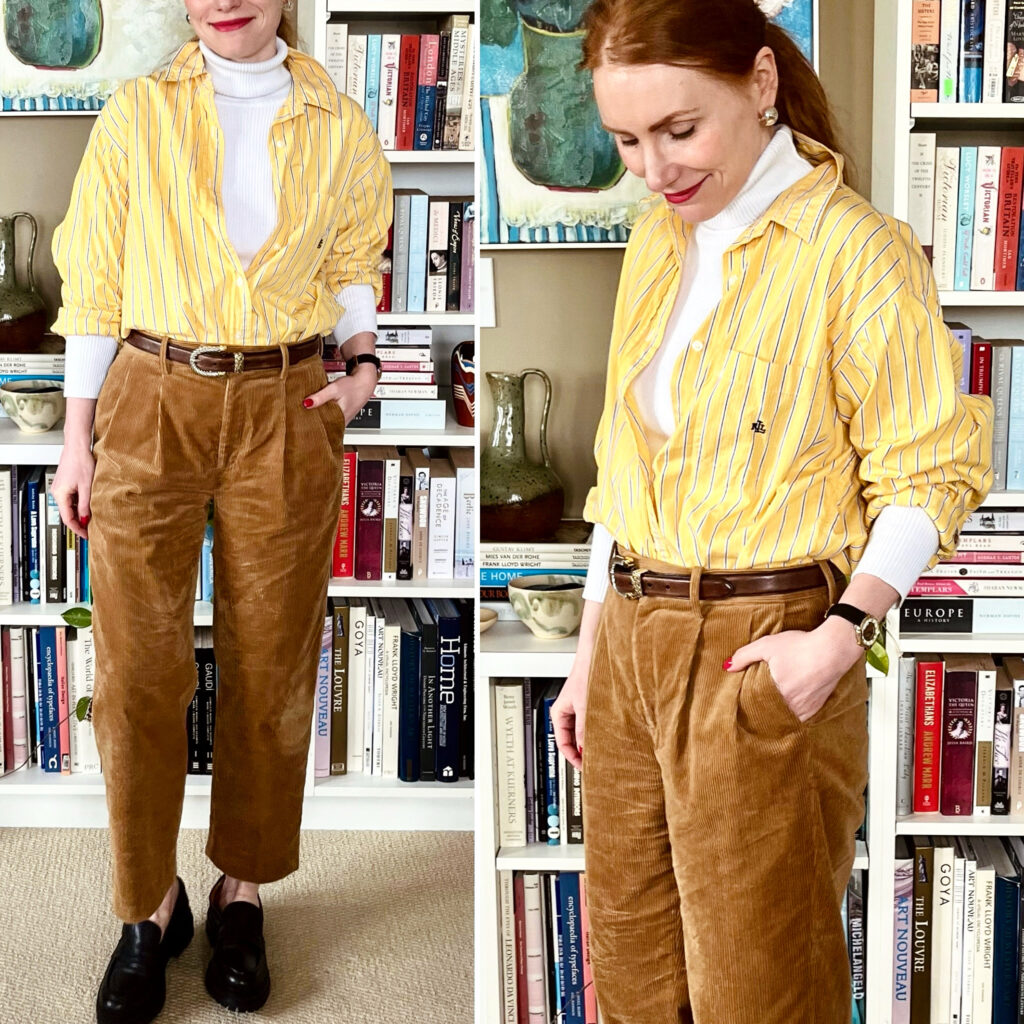
Details: Ricki’s turtleneck, Ralph Lauren shirt, Banana Republic pants, Miz Mooz shoes (all thrifted)
Thoughts: And one more! Also Papa Ralph-inspired, but in a different key. Different brown, different primary colour. Also a hit.

